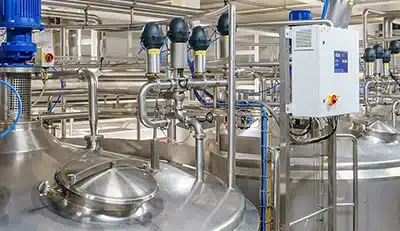Beyond the Foam: Exploring Alternatives to Foam Cleaning in Food Processing
Foam cleaning has long been a mainstay in food processing environments across Ireland. Its ability to cling to vertical surfaces and visibly demonstrate coverage makes it a popular and effective method for cleaning equipment, walls, and floors. But foam isn’t the only option—and in some cases, it may not be the best one.
Whether you’re aiming to reduce water usage, cut down on chemical residue, or improve cleaning efficiency, it’s worth exploring what other methods might suit your facility.
Why Consider Alternatives to Foam Cleaning?
Foam cleaning is effective, but it has its limitations:
- It can be time-consuming and labour-intensive.
- It may leave behind residues if not rinsed thoroughly.
- It typically requires significant amounts of water and chemicals.
- In hard-to-reach or sensitive areas, foam may not be suitable at all.
As sustainability, efficiency, and hygiene standards continue to evolve, many Irish processors are beginning to diversify their cleaning strategies.
1. Enzymatic Cleaning
How it works: Uses enzymes to break down organic material like proteins, fats, and carbohydrates at a molecular level.
Benefits:
- Highly effective against biofilms and organic residues.
- Lower chemical risk for workers.
- Biodegradable and environmentally friendly.
Ideal for: Ready-to-eat (RTE) areas, protein-heavy contamination, allergen management.
2. Dry Ice Blasting
How it works: Propels CO₂ pellets at high velocity to remove contaminants without moisture or chemicals.
Benefits:
- No water or chemical residue.
- Safe for electrical panels and sensitive machinery.
- Non-abrasive to surfaces.
Ideal for: Electrical or dry environments, conveyor belts, hard-to-reach mechanical components.
3. Ozone Cleaning
How it works: Uses ozone gas or ozonated water to kill bacteria, viruses, and mould.
Benefits:
- Leaves no chemical residue.
- Strong, fast-acting disinfectant.
- Breaks down into oxygen—no rinsing needed.
Ideal for: CIP systems, washdown areas, allergen-sensitive zones.
4. Steam Cleaning
How it works: Delivers high-temperature steam to remove grease, kill microbes, and lift soil.
Benefits:
- Reduces chemical use.
- Penetrates crevices and tight spaces.
- Highly effective against bacteria and mould.
Ideal for: Greasy residues, confined spaces, cleanrooms.
5. High-Pressure Cleaning with Minimal Chemicals
How it works: Uses pressurised water jets, optionally combined with lower concentrations of cleaning agents.
Benefits:
- Quick and effective.
- Reduces chemical cost and exposure.
- Less foaming = easier rinsing and less water use.
Ideal for: General production areas, walls, floors.
6. UV-C Disinfection (Supplemental)
How it works: Uses ultraviolet light to destroy microorganisms on exposed surfaces.
Benefits:
- No chemicals or water needed.
- Effective for ongoing surface or air disinfection.
- Can be automated or integrated into production flow.
Ideal for: Post-cleaning disinfection, air quality control.
Choosing the Right Alternative
Each method comes with its own advantages and limitations. Often, the best approach is a blended strategy—using foam in certain zones and alternative techniques in others. Factors like product type, allergen risk, energy usage, water availability, and staff safety should all be considered.
A Cleaner, Smarter Future
The Irish food industry is under growing pressure to reduce environmental impact while maintaining world-class hygiene standards. Exploring alternatives to foam cleaning isn’t just about innovation—it’s about staying ahead of regulations, reducing costs, and protecting your people and products.
Looking to rethink your cleaning strategy?
Our team can help you assess your current processes and recommend solutions that align with your food safety goals and sustainability targets.
Let’s talk clean.
Email hello@alphahygiene.ie to start the conversion.












Leave a Reply